Gordon Baker, From the City to a Country Town
1948
Seven of us lads, booked a holiday on one of the Bathurst boats; it was at the time of the Olym pics which was nice and peaceful listening on the radio. I met a girl serving in the Severn Vale Milk Bar. We corresponded when we reached home – it was Joan Gibbs whom I married in 25 November 1950.
1949
The same group came back to Tewkesbury for our holidays – and Golden Swallow was the boat.
These holidays made me decide to move to live in Tewkesbury which I did in the October. I went into lodgings in a very narrow property in High Street. It was above what is now Stead and Simpson shoe shop at 26-27. As I had served a seven year apprenticeship, I luckily secured a job with Collins and Godfrey in my trade of carpenter; I stayed with them for eleven years until they closed at the end of the 1950s.1 However, as they continued working in their premises in Grosvenor Street, I stayed with them for a short time.
My first job was at Southwick Park and I had to cycle along the old A38, sometimes with a kit of tools on handlebars and lunch bag: that was very precarious! We were renovating the building ready for a Girls’ Reform School. However, the idea was scrapped and it became the Boys’ Grammar School.
Collins & Godfrey Workers at Southwick Park in 1950. (Author)
In the front is Mr. Febery. Gordon is posing with the cigarette!
1950
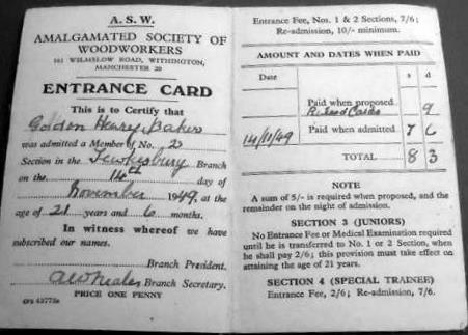
I was married on 25 November 1950 in the Abbey and then we went to live in what is now the Museum in Barton Street. We rented one front room at £1 a week and our daughter, Jeanine, was born at that time. We had to wait three years until we were allocated a ‘prefab’[2] in Warwick Place. At that time, I was working on new houses in Pyke Road, Newtown for Millers. I earned a £1 bonus one day when I was soaked wet-through, fixing a roof ready to be tiled. At that time, there was a shortage of timber to do the flat-roof shuttering so we broke down some old joiners’ benches at the yard. These were quite long and had been used during World War I to make airplane wings.
There was plenty of evidence of the American occupation from the war. There were wooden huts lined with packing case material which we gutted. Unions were pretty strong then and I was cajoled to join.
Eventually after an assortment of jobs, I was promoted foreman. Two jobs were under my wing: Barclays Bank and Frisby’s Shoe Shop. The bank job was supposed to last eight months but it extended to eighteen months because the building had no side walls against the Wheatsheaf and Fowlers the Grocers: this suggests that originally it was an ‘infill’ and the ground floor could have been stables. All the spoil from digging the strong room was transported to Gloucester Road as backfill for the swimming baths which was another of my projects. This was known as the ‘birdbath’ and is now occupied by caravan showrooms.[3] – to be sold for our tea fund! The tiled roof came off to be replaced with a mineral felt flat one and Reg Bassett, the bricklayer, built in the current stone plaque.
1954
In 1954 our first son was born. In 1956 Collins and Godfrey had a big job to do on the Abbey roof: all tiles and gutters on east-end were stripped off because of death-watch beetle. Don Wright was the plumber, his wife owned the Ivy Leaf Café. Clarence Liddell was the joiner with me then. One lunch break on the roof, in glorious sunshine, lasted until ‘knock-off’ time at five o’clock. The reason? Clarence was regaling me of his First World War experiences in the Gloucestershire Regiment: he was one of the first to volunteer and had served in Salonika.[4] Because he was a joiner by trade, one of his jobs was to make the wooden crosses for the dead. Why didn’t I write it down then?
Photo: Gordon at the Sandy Weir on 1 August 1955. The baby is first son, Graham
1957
to Expand
We also spent six months at the ‘Gentlemen’s College’ in Cheltenham, doing nice work to classrooms. We took advantage to look in their chapel: there was such military history there with six VC winners no less!
In the late fifties, we even worked at John Moore’s home in Kemerton, erecting bookshelves. It was a lovely quiet place. I followed this to work on a housing scheme at Newtown in the Rosefield Crescent area. It was while there on Boxing Day 1962, during lunch-time, that started the snow of the famously cold 1963 winter. It happened to be on the enforced building trade holiday (most builders kept to this) and we were supposed to go back to work on 4 January but were laid off. I didn’t work again until the thaw at the end of March. The only money I had to live on was the ‘dole’, collected from the Labour Exchange in Trinity Street which is now Sircombe’s printers. In those days the first six men in the queue were required to shovel snow from the roads: however, at least they would be paid the rate for the job. So, in 1964 I transferred to work for a Welsh company and helped renovate Woolworths.
I moved to Lynworth Lane, Twyning shortly afterwards; so ends my memoir of living in Tewkesbury.
Photo: Frisby’s before being restored by Gordon’ s company before the plaque was installed. (TBC c1957)


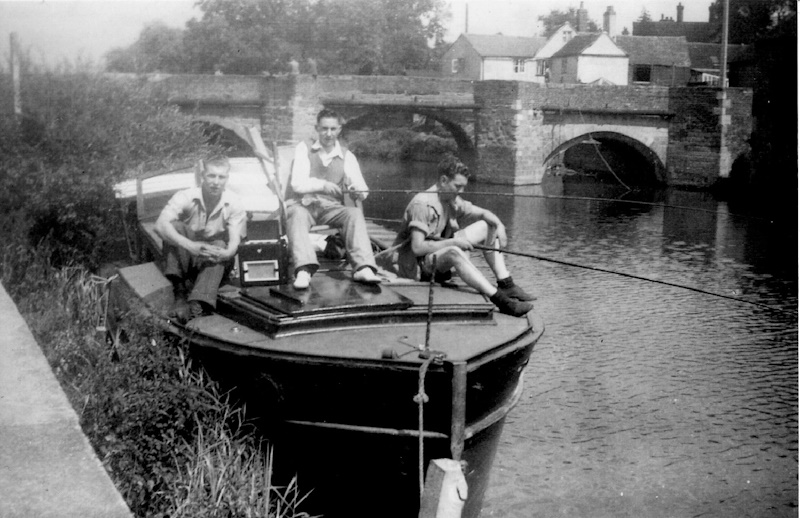
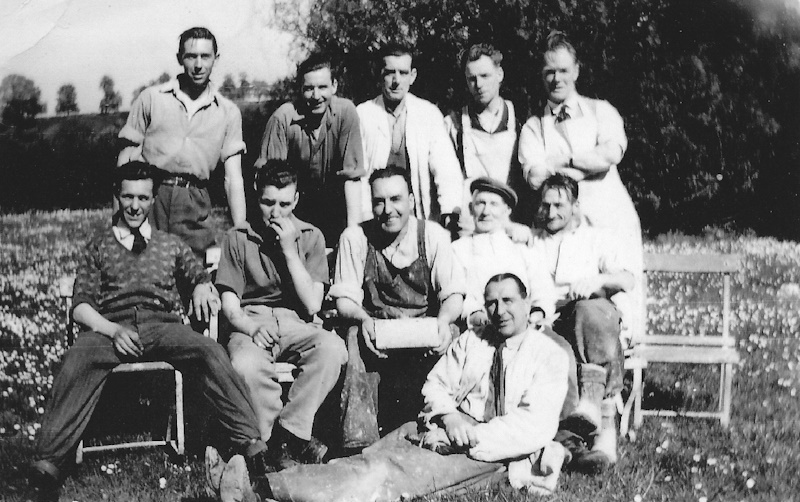
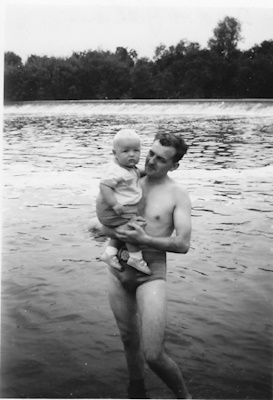
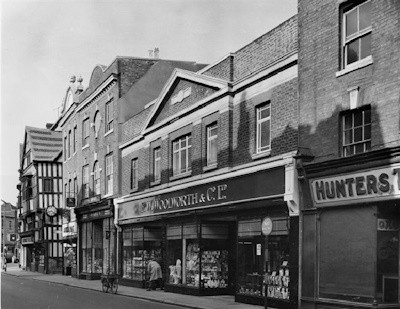
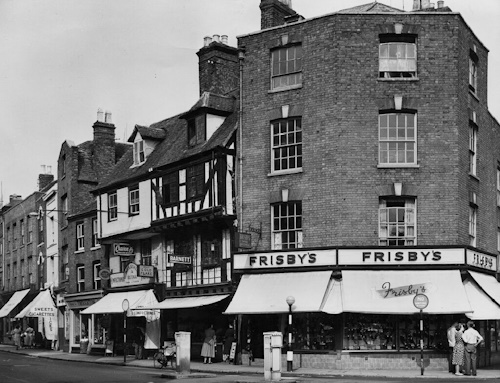
Comments